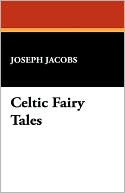

 |

|

The average rating for Celtic Fairy Tales based on 2 reviews is 3.5 stars.
Review # 1 was written on 2010-07-01 00:00:00 Cristian Rl Risdon Cristian Rl RisdonIn the United States, classic fairy tales have been bowdlerized. The dark symbols of ogres, giants, witches, and curses of the Brothers Grimm have been transformed into two-dimensional versions of themselves with curses often being more pranks than devastating supernatural spells and witches becoming more like stepmothers than old crones. Children are no longer eaten and killed with regularity as in the didactic tales of the ancient world where disobedient children quickly met their ends. Favorite Celtic Fairy Tales is one of those bargain Dover paperbacks that one often finds in outlet stores. Although the provenance is Celtic, in general, the names seem to be tied to the Welsh backgrounds. So, one finds the "Tale of Ivan" instead of "Ian" and "The Llanfabon Changeling" rather than an encounter with faerie on the Emerald Isle or in the land of kilts and bagpipes. To be sure, there is a wicked stepmother who turns four children into swans. A naïve reader expects some hero to transform them back for a happy ending, but such cannot be assumed in a Celtic fairy tale. The aforementioned "Tale of Ivan" contains a brutal murder. The (also) aforementioned "The Llanfabon Changeling" isn't about delightful leprechauns but about a faerie troop which is bold in stealing children and forcing them into a dark land of shadows rather than the ever-dancing (but still dangerous) realm of Lord Dunsany's "King of Elfland's Daughter." Favorite Celtic Fairy Tales is a quick read, but it isn't primarily an anthology of happy endings. Some of the stories do have happy endings, but several of them would never pass the survey at a film's pre-release screening. U.S. audiences tend to like neat wrap-ups and victorious protagonists. The world of Celtic fairy tales is one where the victories are not guaranteed and, even when they come, they tend to be costly. This is a nice change of pace, but you have to be in the mood for it. |
Review # 2 was written on 2013-07-31 00:00:00 Calli Wright Calli WrightAfter English fairy tales, Joseph Jacobs turned to Celtic ones, in this and More Celtic Fairy Tales:. Irish, Scottish, Welsh, Manx. . . though he complained that some areas were less gathered than others. And his first resolution to use only those form peasants who spoke no English did not last because he wanted more variety. Some are legends, such as the story of Deidre or that of Powel and Rhiannon, and some are cumulative tales, like "Munachar and Manachar", and some are just fairy lore like "Brewery of Eggshells" or "Elidore." Others are recognizable fairy tales, though you won't find here any of the most poupular tales. Though you will find variants, such as "Fair, Brown, and Trembling", where, even though Trembling is persecuted by her own sisters and goes to church, not the ball, and her story continues even after she has a baby, she is still a Cinderella variant. Or "Gold-Tree and Silver-Tree" which is a Snow White tale even if the queen questions a salmon, not a mirror, and instead of a huntsman letting her go in the woods, her father marries her off secretly to a foreign prince, who, indeed, is not the one who rescues her from her sleep. Some go much farther afield. Indeed, "Smallhead and the King's Sons" put together tale types I had never seen before. I particularly like "The Greek Princess and the Young Gardener." |
CAN'T FIND WHAT YOU'RE LOOKING FOR? CLICK HERE!!!